Arrow Setup 101

One of my favorite things to do each fall is chase bugling bulls with my bow. From the moment the last light fades on my last hunt, I start tinkering with my bow and arrow setup to see how it can be improved. Over the years I have done a lot of research on what I think makes the best Elk hunting arrow. I have also looked at a lot of “Game Film” in the offseason from the hunts of others’ trying to determine what set-ups seem to work best.
This research very quickly led me to a whole new world of technical arrow terms I will explain below such as Spine, Front of Center (FOC), Kinetic Energy (KE), Arrow Momentum (AM), and other aspects of optimizing an arrow that I had never seriously considered. I also came across and started using a tool that brought all of these variables together and helped me optimize my arrow set up. The tool is an online software program called Archers Advantage Online. Many of the local pro-shops use this tool for printing out sight tapes and determining the optimal arrow set ups for their customers. I hadn’t considered owning the software myself, but for about the cost of lunch ($12/yr), I have all of this information at my fingertips.

For the record, I’m just a regular blue-collar OTC hunter and there are a lot smarter people than me that can technically explain these terms. But what I have discovered over the years is that my arrow needs to be properly spined for my bow’s speed. Also, the higher my FOC the better my broad heads fly, and the more KE and Momentum my arrow has the better it has penetrated. The goal I have when shooting an elk is to get a complete pass through because it usually means a double lung hit and when that happens, they don’t go very far. And, an entry and exit hole also produces much better blood trails.
I’m certainly not suggesting that the set up I use is the only one that will effectively kill elk, but I do think there are some key principles to think about when building up an elk hunting arrow and perhaps these recommendations will help you evaluate your current set up to optimize your chance of success when you have that opportunity.

What Brand?
Today there are a lot of good arrow manufacturers. I personally have had great success with Victory, Easton, Black Eagle, and Gold Tip. Each of these manufactures build a wide range of arrow weights and sizes to choose from. Depending on your setup, you may find one that works better for your needs.
Stiffness/Spine
The spine rating of an arrow is simply a measurement of its stiffness. The lower the number, the stiffer the arrow. Each manufacturer as a spine chart on their website that will point you in the right direction to get started with the correct spine for the weight and draw length of your bow. I prefer stiffer arrows for hunting elk because I think they penetrate better than weaker arrows and when shooting broadheads, I tend to shoot tighter groups. I will talk about some other things in this article like FOC (Front of Center) but as you add weight to the front of your arrow, this will increase your FOC and thus weaken the spine of the arrow so you will need to make sure you have a stiff enough arrow to handle the additional FOC. More on this later.
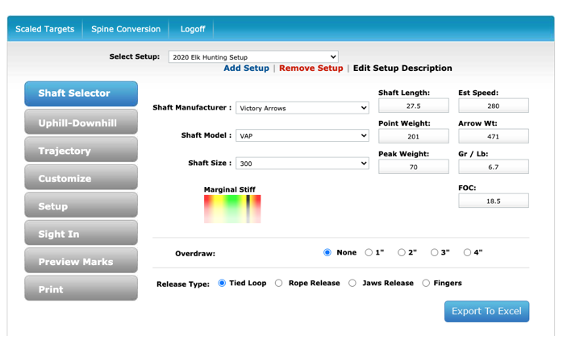
Weight
I prefer to use a relatively heavy arrow for elk. I want the arrow to be light enough to have a reasonably flat trajectory, but heavy enough to penetrate well. For elk hunting, my optimal total weight of an arrow is somewhere between 450-500 grains but this will certainly depend on your setup. I can achieve this weight by choosing an arrow that weight approx. 8.8 grains per inch cut at 27.5”. Then I add 200 grains of weight up front including my broadhead along with about 30 grains with the fletchings and nock.
Speed
Visit any message board and you will quickly find a debate between the weight and speed of an arrow. Most bows today have an IBO of anywhere from 320-350 FPS. IBO is the speed of an arrow calculated at 30” of draw at 70 pounds with a 350-grain arrow. Most of us are not shooting a 30” draw or a light 350-grain arrow. So, the key here is to figure out what your speed will be with the weight of arrow you are shooting. A chronograph is the most effective way to calculate your arrow speed. This will be important to have as you plug your calculations into the Archers Advantage Online Software. I think the optimal speed for effective fixed blade broadhead flight is anywhere between 270 – 290 FPS. I personally like to be at 280 FPS. With my bow set at 70 pounds and 28.5” draw, I can shoot a 450 – 500 grain arrow in that optimal speed range.
Penetration/Momentum/Kinetic Energy
Momentum and kinetic energy are directly related to an arrow’s speed and weight. The faster an arrow travels and the more it weighs, the greater its energy and momentum. Penetration is directly related to momentum and kinetic energy. For the purpose of hunting Elk, Moose, etc, the recommended Kinetic Energy is 42-65 ft-lbs. A 450-grain arrow traveling 280 FPS will generate 78.32 ft-lbs of energy which is plenty for any western big game.
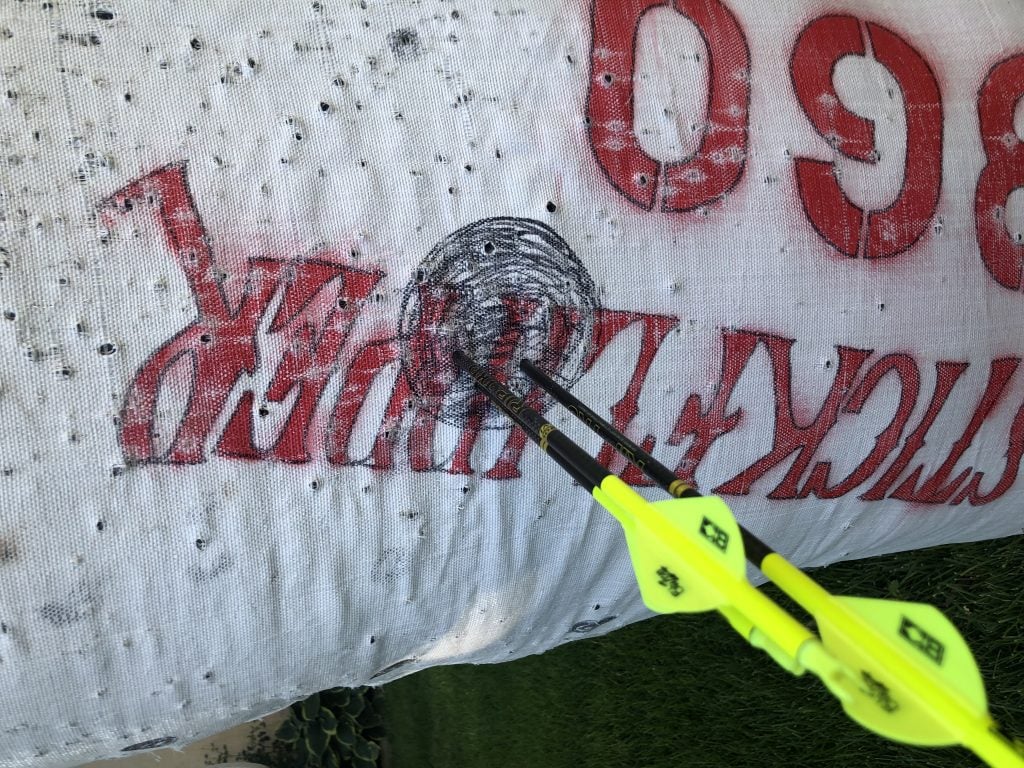
FOC
FOC describes the percentage of the arrow's total weight that is located in the front half of the arrow. The more weight that is located in the front half of the arrow, the more forward is the arrow's center-of-balance. So why does this matter and what should it be? Well, in my experience arrows with greater than 15% FOC tend to have better arrow flight and penetrate better in targets and animals. Some will argue that too much FOC can cause arrows to nose dive at higher ranges. I suppose this would be true at some point. I think a good target goal for FOC is anywhere between 13 and 20% FOC.
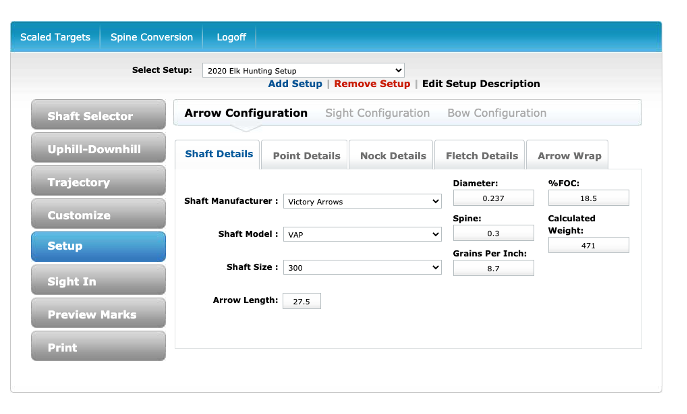
Fletching
I have tried 3 and 4 fletch configurations on my arrow setups and there are pros and cons to both. To keep my FOC as high as possible, I like to keep the back of my arrow as light as possible. So, my preference would be 3 fletch vs 4 due to the weight. However, I know some people are getting a lower profile 4 fletch configuration to stabilize broadheads really well and the total weight is similar to a higher profile 3 fletch configuration. I mostly shoot fixed blade broadheads (only legal in ID where I do a lot of my elk hunting) so that is what I’m trying to optimize for. For years I have used the Q2i Fusion – II or Blazer Vane. My recommendation with any either the 3 vane or 4 vane is to get your arrows fletched with a helical or offset configuration. This will get your arrow spinning quicker and offer more stabilization. Last thing I will say is that some people like to add wraps to their arrows. I think they look great but they also add more weight to the back of the arrow so I will be leaving them off this year to increase my FOC.
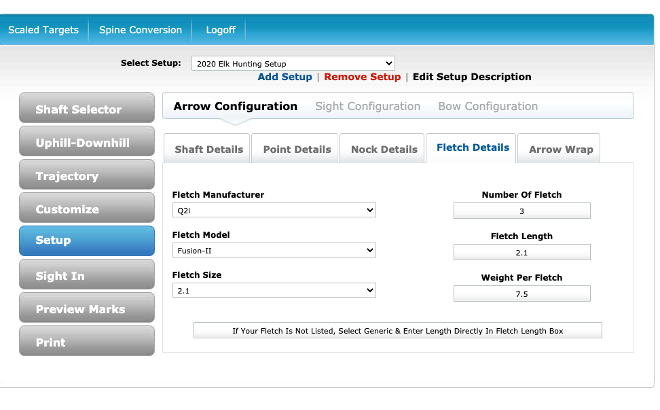
Diameter
Smaller diameter shafts have proven to penetrate better and have less surface area so they drift less in the wind. They are also quieter in flight and require less fletching and less energy to get them spinning. My recommendation is to use the smallest diameter arrows you can get away with.
In Summary
As you can see, whether you are new to archery or a seasoned veteran, there is a lot to know about optimizing your elk hunting arrow setup. I have found Archers Advantage Online to be an invaluable resource in helping me optimize my set up before I go out and purchase arrows. Another great resource is BlackOvis’s Arrow ID.
Once you have determined the setup you want, you can literally go in and customize your arrow in a matter of minutes. The arrows will be built and shipped to your house in as little as 2-3weeks. This is a great option if you don’t have all the time or tools necessary to build your arrows on your own.
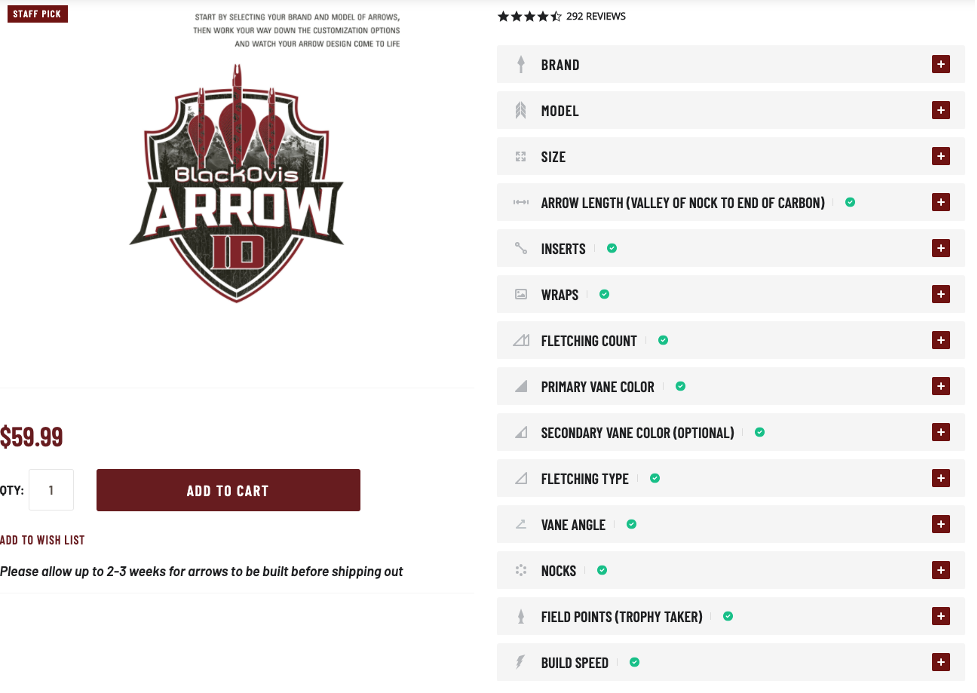
My setup for Elk
Shaft: Victory VAP 300 Spine – 27.5” - 18.5% FOC (201 Grains with Broadhead and insert)
Fletch: Q2i Fusion - II
Nocks: Easton G Nock
Broadheads: 180 Valkryie Jagger
Weight: 471 grains
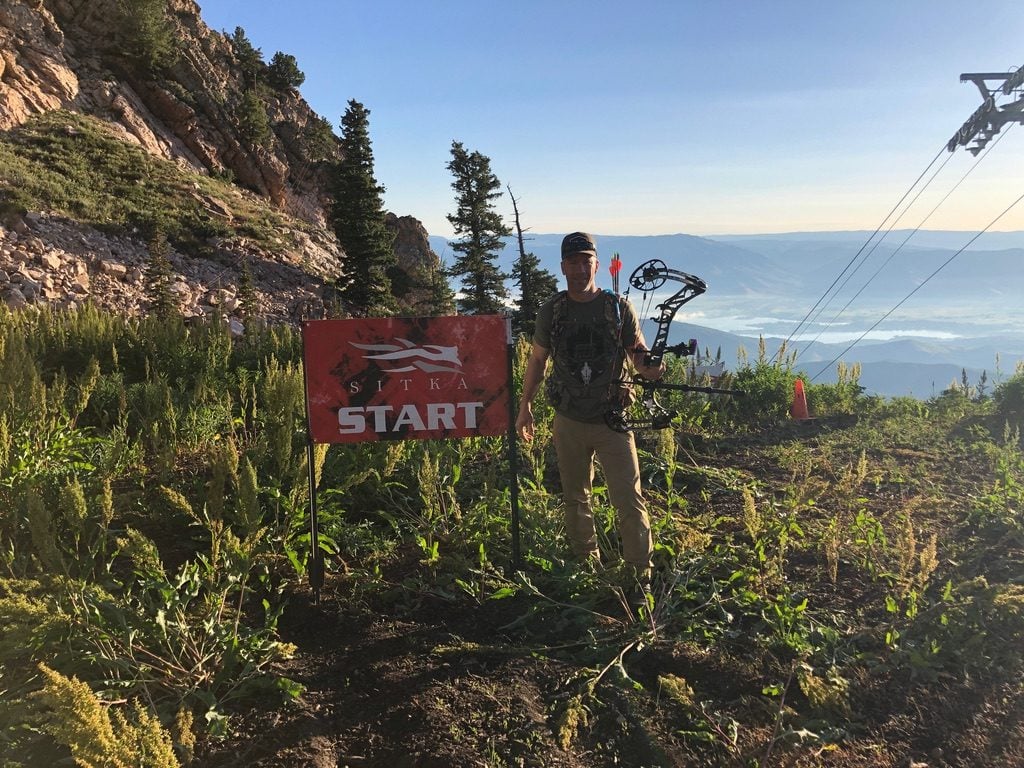
-Jeff Skousen

Thanks for the info for arrow building . I am new to it . So it good to get some info . I live in Norway , So it not so many schops I can go to and get info . Have to order them true the net .
I shout 66 draw length , and 64 pound . And I also like heavier arrows . So I am not sure what I shall select .
We can not hunt with bow in Norway , yet . But I hope soon it will be able to do it !!
Arne